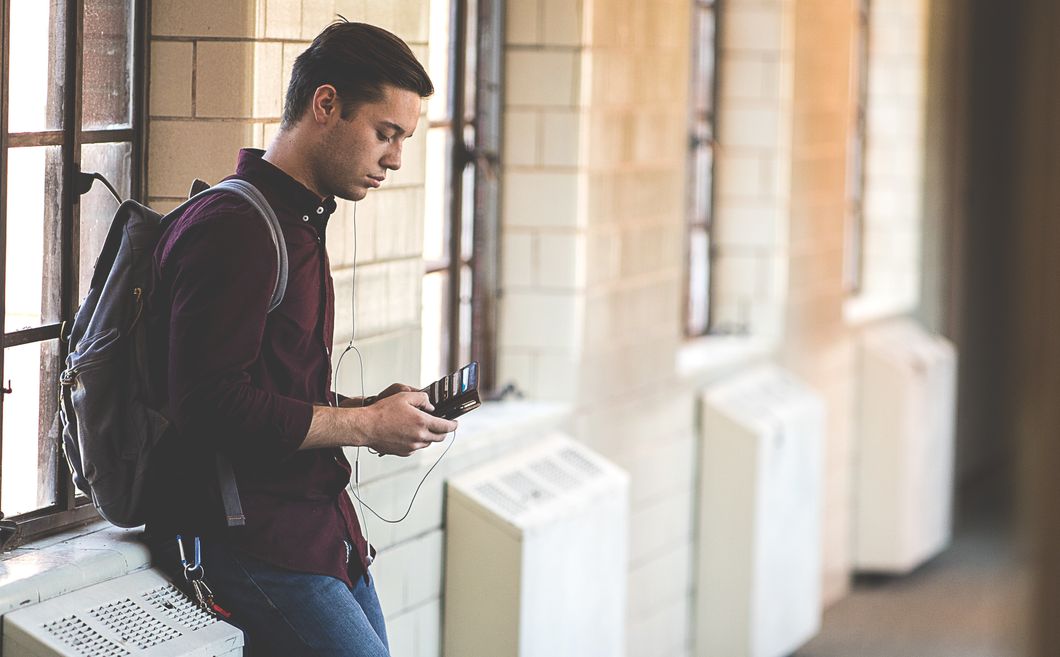When I was growing up, no matter what happened, it was always a certainty that I would go to college. I know many friends who thought that going to college was law, mandatory just like going to high school was. But for many people, college is just a dream. Depending on whether college was always a known endpoint on your path through education, or if it was only something you could go to in your dreams says a lot about what the years after your school will look like. So how come college was always something I knew I would go to, while others are never so sure?
For one thing, it wasn't just me who knew I was going to college, it was everyone in the school I went to, everyone in my community. So how come different communities look so different? Well, that's where funding for schools come in, "in the United States, the public school a student attends is still primarily determined by where their family lives. Most children are enrolled in district schools that receive, on average, nearly half of their funding through local property taxes." the organization Edbuild further argues that "This system ties school budgets to the value of local property wealth and incentivizes boundaries between upper- and lower-income communities. Intentional or not, these invisible walls often concentrate education dollars within affluent school districts, and ensure that low-income students are kept on the outside." Edbuild has even built an interactive map to see where the poorest school districts lie.
So if in my school (where the Edbuild map shows that student poverty seems to fall between 0 and 10%) what does it look like in a school district where Edbuild says that student poverty is over 40%? A group of students from the Detroit School District is currently suing the State of Michigan saying that education is a basic right and that they have been in denying it. This Atlantic article goes into further detail about the case, but the opening lines set the scene for what the school is like, and why a lawsuit was necessary; "What to do when a school is infested with vermin, when textbooks are outdated when students can't even read?"
If you are wondering what this looks like on a more macro scale, then what the funding equates to is one example would be PBS dived into a report by the US Commision for Civil Rights which revealed that "33 percent of high schools with high black and Latino enrollment offer calculus, compared with 56 percent of high schools with low black and Latino student populations." The availability of such classes translates into people being able to have more competitive resumes when applying to college, or being able to enter college with some college credit under their belt. The reason for the existence (or lack thereof) of such classes comes down to funding. As mentioned early funding is largely based on local taxes, separating affluent and non-affluent communities, which has the effect of "On average, school districts spend around $11,000 per student each year, but the highest-poverty districts receive an average of $1,200 less per child than the least-poor districts, while districts serving the largest numbers of minority students get about $2,000 less than those serving the fewest students of color, according to the study."
So what can be done about this? Well, before looking at solutions we need to get as close as we can to the root of the problem. The Economic Policy Institute (EPI) says in a report that "it is increasingly apparent that performance gaps by social class take root in the earliest years of children's lives and fail to narrow in the years that follow. That is, children who start behind stay behind—they are rarely able to make up the lost ground. … The development of strong cognitive and noncognitive skills is essential for success in school and beyond. Low educational achievement leads to lowered economic prospects later in life, perpetuating a lack of social mobility across generations."
The solution needs to be far-reaching, we need to change how schools are funded, and make sure that schools start early. The EPI recommends "Greater investments in pre-K programs can narrow the gaps between students at the start of school. And to ensure that these early gains are maintained, districts can provide continued comprehensive academic, health, nutrition, and emotional support for children through their academic years, including meaningful engagement of parents and communities." The PBS article said a good start would be "states should do a better job of raising education funding and in equalizing spending among school districts. He also called for a greater federal role in making sure that less affluent states that need additional education funding get it." They also included that school districts should be desegregated and that when spending the money it needs to be done wisely. One example being "simply increasing the salaries of all teachers in a high-need school district won't have as much of an impact as identifying high-performing teachers and increasing their salaries."
All and all, with school, like most things, you get what you pay for, and right now for too many Americans we are paying for the cheapest education system, one which doesn't even guarantee students will leave knowing how to read. This burned then falls upon groups of people who are already struggling. This needs to end if we want to believe America is a place where anybody can succeed. Especially when education plays such a crucial role in success.
















